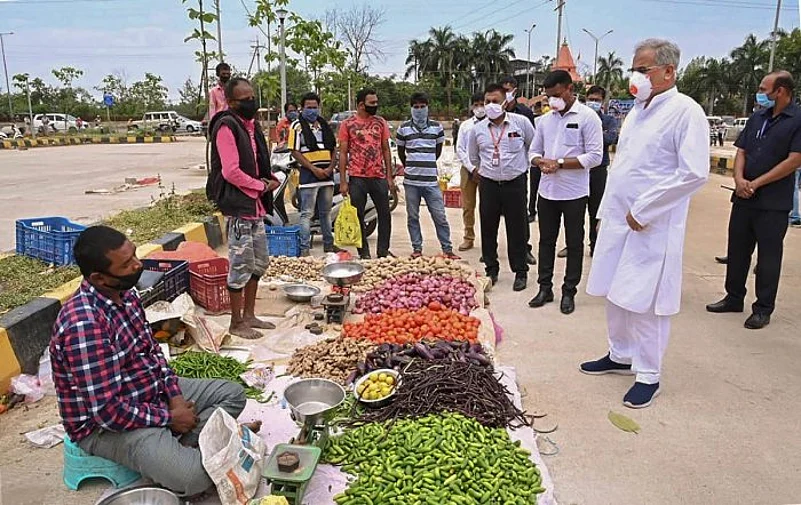The ongoing Coronavirus pandemic has exposed gaping holes in India’s healthcare sector. Reports of inadequate capacity of hospitals, particularly government-run facilities in non-metro cities and financially backward states, to deal with the steadily rising number of infected persons have been frequent, as have complaints from the medical fraternity about lack of PPEs for hospital staff or ventilators for seriously ill COVID-19 patients.
Amid these gloomy reports of mounting challenges in a sector caught unprepared – but still valiantly willing – to combat a pandemic, there have also been heartening, almost astonishing, instances of swift capacity-building by some state governments. Kerala, with its laudable past record of a well-established healthcare system, has earned accolades for standing up to the challenge posed by the Coronavirus. Rajasthan chief minister Ashok Gehlot has been reaping plaudits for the now famous Bhilwara model of containing the pandemic in one of the early COVID-19 hotspots of the country.
Advertisement
An equally, if not more, successful model, however, seems to have come from the unlikely quarters of predominantly rural Chhattisgarh. That the financially backward state with its largely tribal population, inaccessible terrain and a legacy of Left-Wing Extremism has managed to not just flatten the Coronavirus curve but is now on its way to defeat the pandemic, is nothing short of a miracle. When the virus began spreading across India in the latter part of March, governments and medical experts across the country had been wary of the risk of community transmission pushing the pandemic to an unmanageable level. For Chhattisgarh, with its large tribal and rural population and the tradition of commune habitation, the immediate challenge was to ensure that the risk of community transmission is nipped in the bud. And, the past three weeks seem to suggest that the state government, under Chief Minister Bhupesh Baghel, succeeded remarkably on this front.
Advertisement
Of the 36 COVID-19 cases recorded in the state, all but eight have been cured as on April 23 and no life has been lost to the deadly virus. Despite largely containing the pandemic within the state, the Baghel administration has continued to build capacity for Chhattisgarh’s healthcare system, should the virus threaten resurgence once the ongoing lockdown is lifted or substantially eased.
With Baghel personally monitoring ever aspect of the strategy to contain the pandemic and health minister T.S. Singh Deo working overtime to ensure that doctors, hospital staff and patients do not want for anything, the state’s healthcare system appears to have metamorphosed over the past month – a revamp that had eluded Chhattisgarh ever since it was carved out of Madhya Pradesh nearly two decades ago. The Raipur AIIMS was fully equipped to deal with any emergency situation, isolation wards were promptly set up across all districts with capacities varying between 100 and 10 beds, the government issued licenses post haste to three distilleries for industrial manufacture of alcohol-based hand sanitizer, the service period of 401 contract-based Ayurveda physicians was extended by three months and provision for special allowance to staff engaged in COVID-19 treatment was made within the first two weeks of the crisis.
Additionally, services from private hospitals were also sought while the government continued to build its own facilities – for instance, on April 19; Deo shared images of a 100-bed newly built ESIC hospital in the state’s Korba district which the government had now decided to dedicate for COVID-19 patients along with separate accommodation for the hospital’s staff.
Despite the Centre sitting on repeated requests by Baghel to release Chhattisgarh’s due share in the GST collection, the state government has succeeded in finding financial resources to simultaneously fund social welfare programmes aimed at ensuring that the poor and marginalized communities are not deprived of food and other essential commodities during the lockdown.
Advertisement
The Baghel administration has provided free ration totaling 70 kgs each for 56.55 lakh households for the period of April and May. Another installment of rice, gram, jaggery and salt for the month of June will be released soon. Another 8.81 lakh APL families have been provided this ration kit at a highly subsidized rate of Rs 10 per kg. The state government has also ensured doorstep delivery of cooked nutritious meals for 24.76 lakh beneficiaries of the ICDS scheme.
To provide emergency funds to tackle any unforeseen exigency, the state government also allocated Rs. 1 crore each to all District Collectors for setting up temporary camps for homeless families and non-resident and fulfill their basic requirements.



















